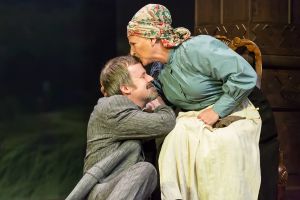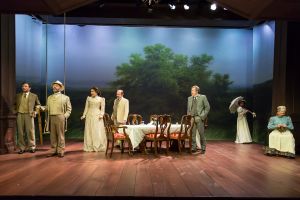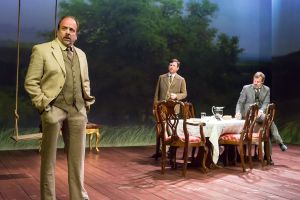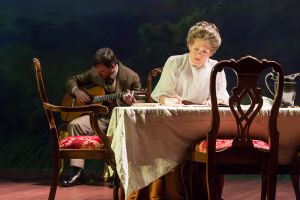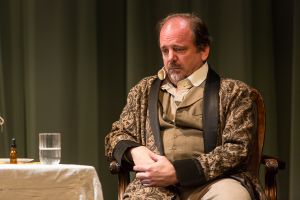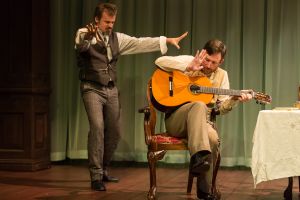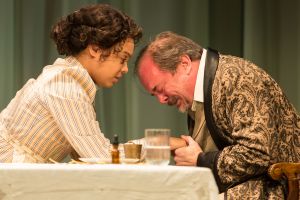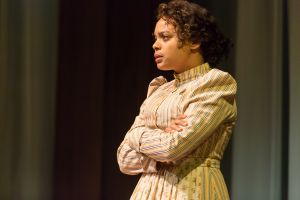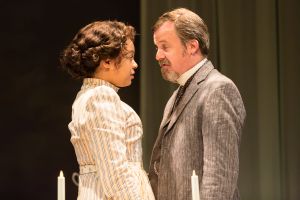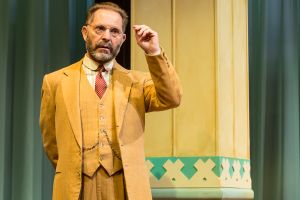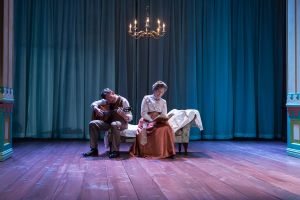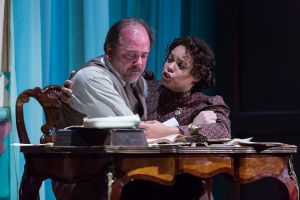The Pearl’s 31st season started with Uncle Vanya. It’s a Chekhov I had not seen before, but it does not stray far from his other big works. Good, solid country people collide with bored or frivolous city people, everyone’s lives get shaken up, murder is attempted, no one is happy and the invaders leave again, but leave the good, solid country people worse for wear.
As always, the Pearl’s production values do not disappoint. A lovely pastoral set morphs into a colorful country house. My one complaint — purely as a photographer — is that huge table. It cut off all the actors who got caught behind it. Costumes were, as always, perfect.
It’s fascinating to keep coming back to Pearl and see these familiar actors slipping into various roles. It really does point out the benefits of a rep company.
